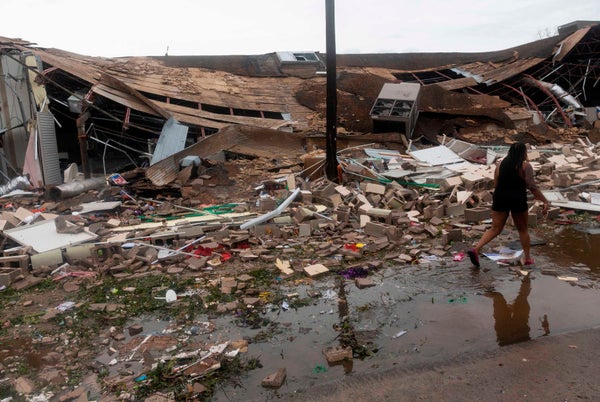Two senior federal officials warned yesterday that much of the nation is unprepared for worsening natural disasters, particularly storms that intensify rapidly and leave little time for evacuation.
"These storms are getting worse, they're causing more destruction. We're going to have less time so we can warn people," Federal Emergency Management Agency Administrator Deanne Criswell said.
National Hurricane Center Director Ken Graham said he fears that people whose communities have been unscathed by disasters will think they are safe.
On supporting science journalism
If you're enjoying this article, consider supporting our award-winning journalism by subscribing. By purchasing a subscription you are helping to ensure the future of impactful stories about the discoveries and ideas shaping our world today.
"The complacency part of it worries me," Graham said. "There are places that haven't seen a hurricane in a century."
Criswell and Graham spoke to reporters yesterday in Orlando during the annual National Hurricane Conference. Their remarks came the day after a study reported that human-induced climate change intensified rainfall dumped by storms during the record-breaking Atlantic hurricane season in 2020 (Climatewire, April 13).
The study in the journal Nature Communications also found that 10 of 14 hurricanes in 2020 underwent "rapid intensification" whereby wind speeds increase by 35 mph or more within a 24-hour span.
"We are seeing right now these natural-weather events that are getting more severe — stronger, lasting longer, intensifying more rapidly," Criswell said.
Criswell and Graham said their agencies are struggling to develop messages that will motivate people to protect themselves or evacuate from approaching storms.
Many Louisiana residents ignored warnings in August 2020 that Hurricane Laura, a Category 4 storm, would cause coastal waters to surge by 15 to 20 feet.
"We got feedback that not everyone was getting out of these areas," Graham said. "People base their risk on their previous experience."
Laura killed 42 people and caused $25 billion in damage, much of it from storm surge along the Louisiana coast that knocked out power and water systems for weeks.
FEMA is working to make its warnings "culturally specific" to get the attention of diverse communities, Criswell said.
"We want to speak the way they want to hear it," Criswell said. FEMA last year developed campaigns focused on Hispanic residents, which she said helped more people find guidance on the agency's website.
"We still have a long way to go on cultural diversity," Criswell said.
Emergency officials also aim to focus more on post-disaster safety, when people often take risky actions. Since 2017, carbon-monoxide poisoning has killed more people in disaster zones than storm surge because survivors run generators in enclosed spaces such as garages, Graham said.
"We need to talk about the proper use of generators," Graham added.
Reprinted from E&E News with permission from POLITICO, LLC. Copyright 2022. E&E News provides essential news for energy and environment professionals.
